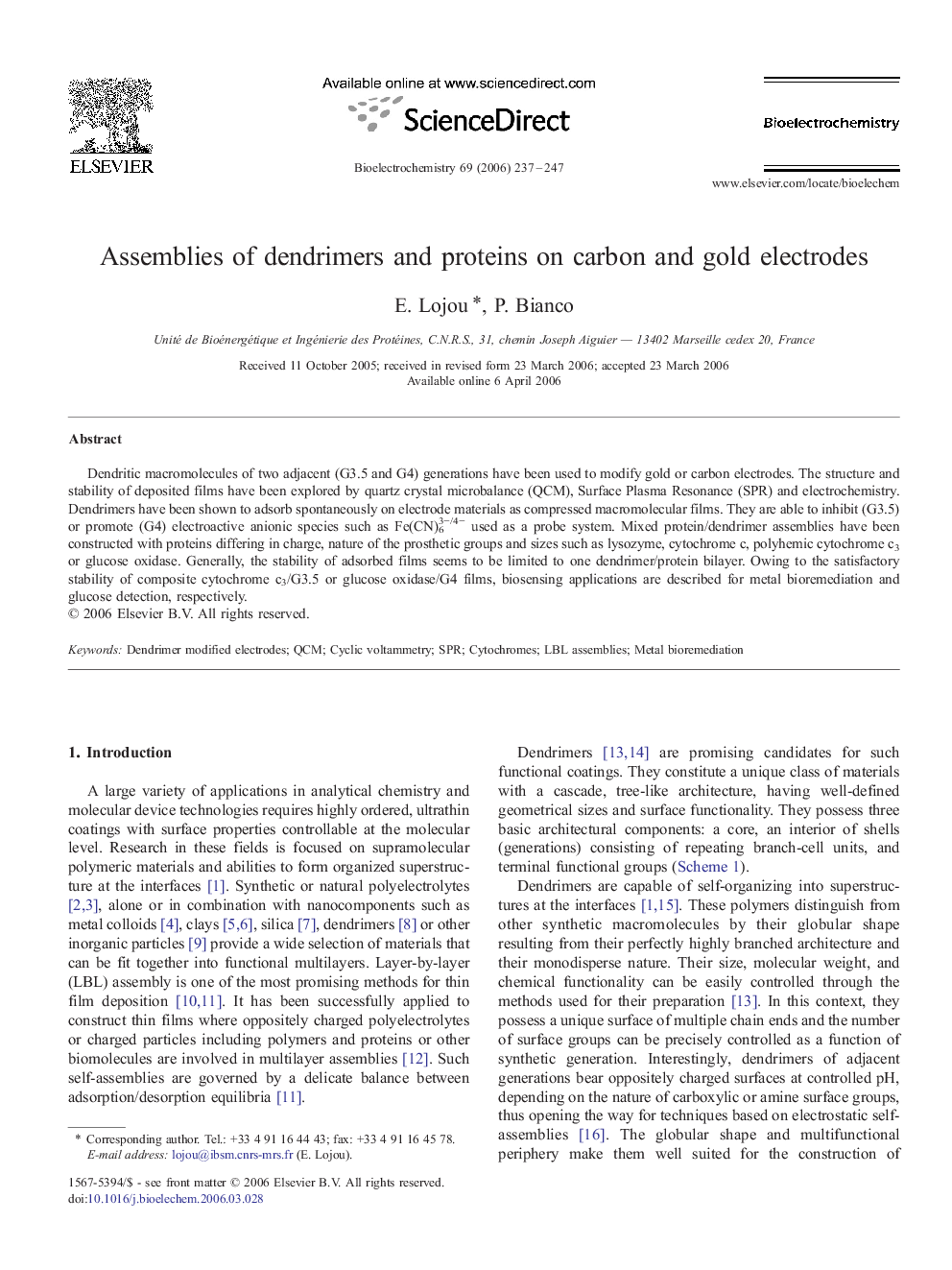| Article ID | Journal | Published Year | Pages | File Type |
|---|---|---|---|---|
| 1269426 | Bioelectrochemistry | 2006 | 11 Pages |
Dendritic macromolecules of two adjacent (G3.5 and G4) generations have been used to modify gold or carbon electrodes. The structure and stability of deposited films have been explored by quartz crystal microbalance (QCM), Surface Plasma Resonance (SPR) and electrochemistry. Dendrimers have been shown to adsorb spontaneously on electrode materials as compressed macromolecular films. They are able to inhibit (G3.5) or promote (G4) electroactive anionic species such as Fe(CN)63−/4− used as a probe system. Mixed protein/dendrimer assemblies have been constructed with proteins differing in charge, nature of the prosthetic groups and sizes such as lysozyme, cytochrome c, polyhemic cytochrome c3 or glucose oxidase. Generally, the stability of adsorbed films seems to be limited to one dendrimer/protein bilayer. Owing to the satisfactory stability of composite cytochrome c3/G3.5 or glucose oxidase/G4 films, biosensing applications are described for metal bioremediation and glucose detection, respectively.
